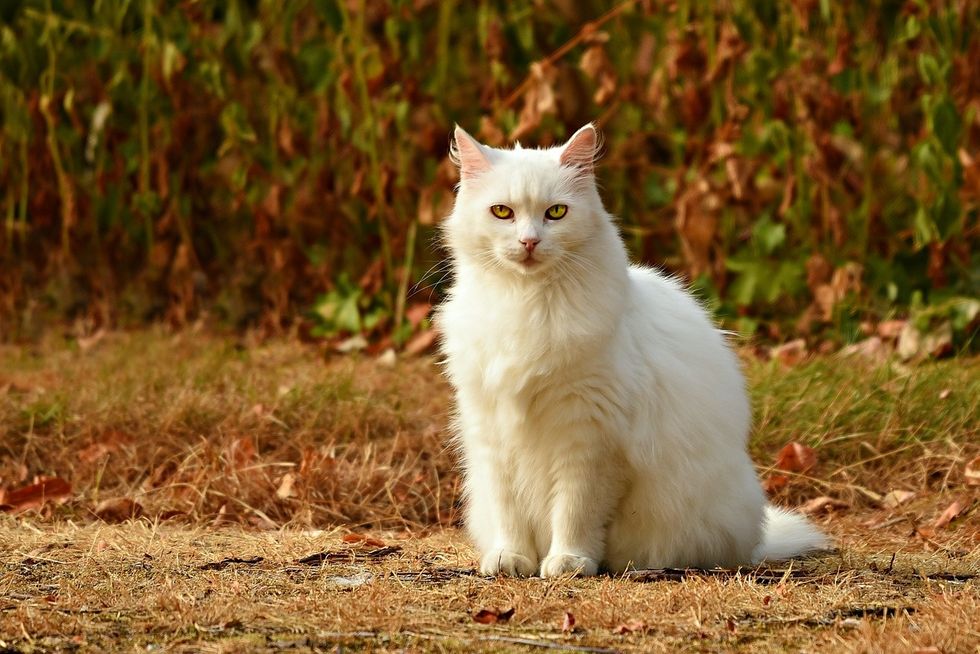Feeding is love
Many cat owners show love to a cat through food because man is by nature a social creature that shows love through feeding. Humans are social beings when food is part of their social system. (In social and family gatherings, and even when we love someone or are we cooking for him or her). Unlike us, the cat is not a social creature, so it does not make contact with food, or in other words, food is not a social bond. The cat is a solitary hunter who has a small prey and because of his size he can not share it because it is barely enough for him. Cats learn (by strengthening our charges) that when they gargle and rub or yell they get food. So it happens that many cat owners and especially those who do not have social cats feeding time is the only time they have a relationship with their cat. (Social connection). Therefore, one of the recommendations is to feed the cat in small doses several times a day, but feeding in smaller doses is appropriate for the nature of the cat. Also, cat owners need to learn that there are other ways to interact with cats (playing, brushing) and not just through food.
Many cat owners think that an oil cat is proof that the cat is loved and treated, and they try to make contact through feeding. The cat learns this pattern and uses howls to get food or attention. In such cases, it is better for the owner not to respond to the cats' pleas (howls, rubbing, roaring grunts, and any other preaching behavior) once the owner does not answer, the cat will simply stop howling.It is important to note that the cat does not always ask for food and sometimes it only asks for attention, attention or play. You can put it in a dieting treat toy that the cat has to find by himself. Such activity encourages hunting. It is also advisable to cultivate relationships with the cat not through feeding that either by playing fishing games, brushing, stroking, flushing soap bubbles, giving a petty cat. These activities strengthen the relationship between the owner and the cat. It is also highly recommended to create for the cat a safe routine in which he knows when to eat, when to play, and so on. A routine that changes all the time, very confusing cats and making them cats in stress.
So how do we help a chubby cat?
First, take your cat for a veterinary test to see if the cat is healthy and does not suffer from excess fat problems such as cholesterol, diabetes, liver problems, and more. The veterinarian will determine if the cat needs to have a blood test. Together with the veterinarian, you will determine a weight loss plan for the cat and times of visit to the clinic where the cat will be considered by the veterinarian.The veterinarian will adjust the cat to a diet and feeding method and will usually ask to fill a diary with feeding amounts and the cat's response to the new routine.
In conclusion,
1. Switch to low-calorie, high-fiber cat food (which will be prescribed by the veterinarian).
2. Beyond a feeding routine that suits the owner's routine and cat's character.
3. Play with the cat. (with this awesome remote control snake).
4. Improve the relationship with the cat.
5. The owner must understand that not every cat's wail is a request of food and sometimes the cat simply asks for petting or playing.6. It is important to create a regular routine of feeding and playing.
It is important to visit the veterinary clinic every two months to consider the cat and check whether there is progress in the slimming program. It is important to remember that contact with the veterinarian during weight loss is the key to the success of the cat's slimming.The ideal weight of an adult cat is four to six pounds.Take care of your cat's health for the long years of happy and joyful life full of Meow Meow.



 StableDiffusion
StableDiffusion StableDiffusion
StableDiffusion StableDiffusion
StableDiffusion Photo by
Photo by  Photo by
Photo by  Photo by
Photo by 
 Photo by
Photo by  Photo by
Photo by  Photo by
Photo by  Photo by
Photo by  Photo by
Photo by 







